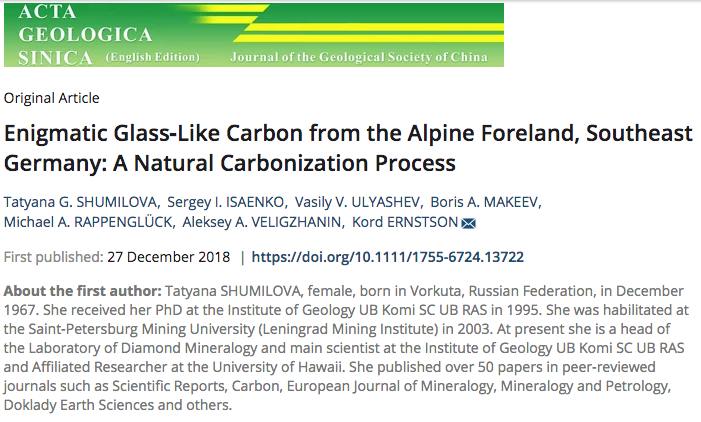 Keywords astrobiology diamond carbyne coalification carbonization meteorite impact chiemite
Keywords astrobiology diamond carbyne coalification carbonization meteorite impact chiemite
Abstract
Unusual carbonaceous matter, termed here chiemite, composed of more than 90% C from the Alpine Foreland at Lake Chiemsee in Bavaria, southeastern Germany has been investigated using optical and atomic force microscopy, X‐ray fluorescence spectroscopy, scanning and transmission electron microscopy, high‐resolution Raman spectroscopy, X‐ray diffraction and differential thermal analysis, as well as by δ13C and 14C radiocarbon isotopic data analysis. In the pumice‐like fragments, poorly ordered carbon matter co‐exists with high‐ordering monocrystalline α‐carbyne, and contains submicrometer‐sized inclusions of complex composition. Diamond and carbyne add to the peculiar mix of matter. The required very high temperatures and pressures for carbyne formation point to a shock event probably from the recently proposed Holocene Chiemgau meteorite impact. The carbon material is suggested to have largely formed from heavily shocked coal, vegetation like wood, and peat from the impact target area. The carbonization/coalification high PT process may be attributed to a strong shock that instantaneously caused the complete evaporation and loss of volatile matter and water, which nevertheless preserved the original cellular structure seen fossilized in many fragments. Relatively fresh wood encapsulated in the purported strongly shocked matter point to quenched carbon melt components possibly important for the discussion of survival of organic matter in meteorite impacts, implying an astrobiological relationship.































































